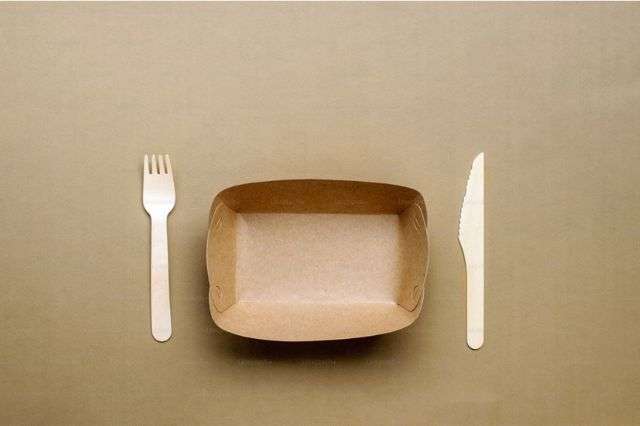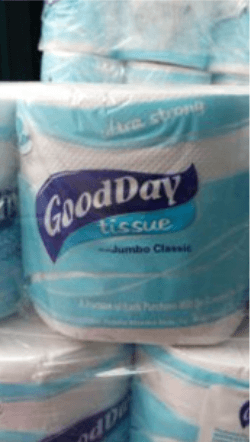Embracing Eco-Friendly Packaging: A Deep Dive into Sustainable and Biodegradable Solutions
As environmental consciousness around global plastic pollution and overflowing landfill volumes mounts among consumers, brands face growing stakeholder pressures mitigating packaging footprints through renewable materials and circular life cycle designs, recovering value from waste economically. This spotlights the unfolding sustainable packaging revolution promising ecologically balanced solutions meeting modern buyer eco-ethics that now influence preferences and loyalty. Indeed, the market potential surges exponentially as companies increasingly tap opportunities to promote eco-credentials embedded in products while attracting like-minded purchasers who are consciously sourcing sustainably day-to-day. This analysis will explore leading biodegradable and compostable technologies plus best practices, assuredly putting organizations on the vanguard and capturing wide-open blue ocean chances before less agile competitors marshal responses. First-mover advantage awaits.
What is Eco-friendly Packaging?
Eco-friendly packaging, also known as Sustainable packaging is a type of packaging that utilizes materials that come from renewable sources, resulting in improved sustainability, promoting easy recycling, and reducing environmental impact. Sustainable packaging considers the present need with great consideration on the social, environmental and economic value for the future generations.
Types of Sustainable Packaging
Numerous alternatives to typical plastic or polystyrene containers now satisfy renewable packaging needs creatively. The following are four common ones:
Biodegradable Packaging
Unlike traditional petroleum-based plastics, which generally break down over centuries, exacerbating microplastic pollution when discarded, biodegradable materials fully decompose through natural processes in months. The biodegradable containers and packaging options increasingly provide environmentally-friendly alternatives, including:
Starch-Based Plastics: Soy protein, corn, and potato starches make flexible packaging biodegrade in under 180 days.
Cellulose-Based Materials: Wood pulp or cotton byproducts like bagasse create compostable containers as strong as plastic yet fully biodegrade in months.
Compostable Packaging
Compostable materials break down into nutrient-rich fertilizing outputs recovered through commercial composting facilities or at-home compost piles and bins. Two infrastructure options exist driving designs:
Industrial Facilities: Municipal or independent compost industry sites provide large-scale, consistent volume capacity for recovering agricultural-grade amendments from spent packaging on a mass level. These sites require compliance with the Biological Processing Standard.
Home Composting: Small backyard compost piles need consistent heat and airflow. Thus, homemade compostable packaging relies on bio-based materials accessible to slower-degrading excellent, anaerobic digestion conditions prevalent. It takes 6-12 months to decompose spent resources into usable compost outputs dependably.
Recyclable Packaging
While recycling provides the least environmentally beneficial option sustainability-wise compared to closed-loop compostable/biodegradable alternatives, common plastic polymers remain ubiquitous currently. So, maximizing recyclability helps in the interim. Recycling infrastructures fall into two primary categories:
Single Stream: This method mixes recyclables together in one bin, including plastic, metal, glass, and paper. It is more convenient for consumers, although extracted materials often get downcycled given cross-contamination risks.
Multi-Stream: Source-separated recyclable collection segregates paper, plastics, and metals into discrete categorized waste channels. This enables purer, higher-quality recycled bales that ultimately demand higher value.
Edible Packaging
A futuristic subset – edible packaging you can consume preventing residual waste entirely. Materials commonly showcase:
Seaweed: Used to produce protective seals retaining food freshness. Naturally biodegradable too.
Rice Paper: Combined with food-grade adhesives, crisp rice paper sheets offer a flavorless wrapper alternative that supports dry items cleanly.
Starch: Versatile dried starch molded into bottle-like containers or trays dissolves when added to hot liquids, making it suitable for direct consumption as leftovers.
Expect niche custom novelty usage until scales rise, lowering creation costs.
Benefits of Sustainable Packaging
Myriad advantages accelerate sustainable packaging adoption spanning:
Environmental
- Waste Reduction: Renewable materials biodegrade into ecosystems by design, preventing enduring plastic persistence plaguing communities.
- Lower Carbon Footprints: Bio-derived materials utilizing renewable feedstocks like soy versus fuel-intensive plastic production emissions cut carbon intensity.
- Resource Conservation: Recyclable and compostable packaging maximizes reuse potential from materials capturing value beyond single-use lifespan. Circularity promoted systemically reduces new resource demands overall.
Economic
- Cost Savings: Optimized shipping from lighter-weight bioplastics lowers distribution costs. Waste reduction also directly cuts dumpster pickup service expenses. Operational leverage expands ecologically and financially in parallel.
- Market Advantage: First-mover brand positioning through early renewable material adoption boosts positive publicity, consumer perceptions, and buyer loyalty around forward-thinking companies appearing responsibly minded on issues purchasers increasingly prioritize socially.
- Regulatory Compliance: By self-imposing recyclable packaging quotas, organizations now mitigate regulatory non-compliance exposures as locations enact eventual mandatory thresholds through gradual voluntary measures that benefit all stakeholders equally.
Health
- Safety: Eliminating hazardous polymer additives like BPA or phthalates from packaging plus food contact surfaces mitigates health externalities suffered involuntarily by consumers otherwise exposed unknowingly to such newly regulated toxins included commonly to bolster legacy plastics.
- Purity: Removing synthetic chemical contamination risks also maintains the purity and potency of pharma goods sensitive to marginal integrity or shelf life degradations traced back to packaging reactions deprecating encapsulated compounds through reactive leaching into medicine contents.
The above synthesis plainly conveys that implementing biodegradable and compostable packaging brings measurable progress beyond solely branding facades, delivering triple-bottom-line sustainability. The time for action arises.
Challenges and Solutions in Sustainable Packaging
Like all innovations, growth barriers exist, potentially slowing market permeation:
Cost: Presently, limited supply chains keep renewable plastics pricing higher than incumbents, benefitting economies of immense scale and vertical integrations built over decades. Thankfully, efforts to expand manufacturing capacities continue gradually improving affordability each year.
Performance: Initial material iterations lacked strength, moisture, and heat resistance compared to polyethylene properties. But newer generations of NatureWorks corn-based polymers and agricultural bioplastics closely approach durability, reaching parity.
Consumer Confusion: Varied terminology like compostable, biobased, biodegradable, and recyclable causes misunderstandings about intended end-of-life handling, confusing well-intentioned users actually despite highly noble intentions. This overemphasizes consumer education’s importance in ensuring proper disposal procedures are followed, maximizing sustainability intentions by design.
Infrastructure Immaturity: Local composting facilities and curbside food waste pickup accessibility remain limited but expand annually as municipal programs ramp investments, capturing growth opportunities unlocked. Home composting likewise relies on user discipline committing personally. Efforts spread slowly.
Surmounting challenges requires cross-value chain cooperation among makers, governments, retailers, and consumers. Collectively, they envision greener futures supported through daily actions, voices, and votes, which accelerate change. United, we progress.
Factors to Consider for Sustainable Packaging Adoption
When exploring renewable transition paths optimum balancing unique constraints, weigh considerations like:
Current Material Categories: Assess mix usages, such as flexible films, rigid containers, cushioning, etc. Solutions differ, matching conversions ideally.
Supply Chain Capabilities: Survey supplier readiness capacities delivering innovative alternatives scalably without reliance on single sources, risking continuity disruption if lacking fallback flexibility as innovations continue maturing,
Product Shelf Life: Test enclosed goods’ stability against evolving moisture, gas, and light barriers, distinguishing where legacy plastics temporarily remain necessitated or remain over-engineered beyond adjusting technical specifications, extending preservation sufficiently while migrating toward eco-conscious platforms.
Customer Requirements: Market research and periodic consumer surveys determine acceptable tradeoffs willing to tolerate amid change balancing essential performance, health safety, and product integrity besides sustainability improvements strived for over iterations transitioning gradually aligning customer expectations amid fluid materials innovation.
Compliance Standards: Monitor shifting regulatory landscapes geographically as environmentally progressive countries and states enact waste reduction or recycled-content packaging quotas through legislation that influences global supply chains.
Undertaking due diligence preceding shifts safeguards successful execution and acceptance. Bridging present conventions onto next-generation materials, committing to environmental stewardship central to customer and operational value chains, and delivering mutual success where viability never gets jeopardized throughout progressions, innovating responsibly ahead.
Conclusion
With global plastic waste surging year-over-year, societies realize that reversing deleterious impacts now hinges on revolutionizing packaging systems that were initially engineered with absent ecological considerations during the 1950s’ deployments. Today’s realities require implementing biomaterial alternatives like biodegradable containers, offering feasible near-term transitional technologies while infrastructure and consumer practices optimize gradually to speed up further progress industrywide. Thankfully, brilliant packaging innovation brings this sustainable vision increasingly within reach as leading brands proactively adopt renewables, stealing the first-mover advantages their slower competitors will later covet. Set the bar higher before others raise expectations for your sector. Lead consumers conscientiously toward gratifying ethical intentions through packaging selections likely made thousands of times during lifetimes. Let materials make positive differences today, and cumulative change will unfold sustainably evermore tomorrow.





